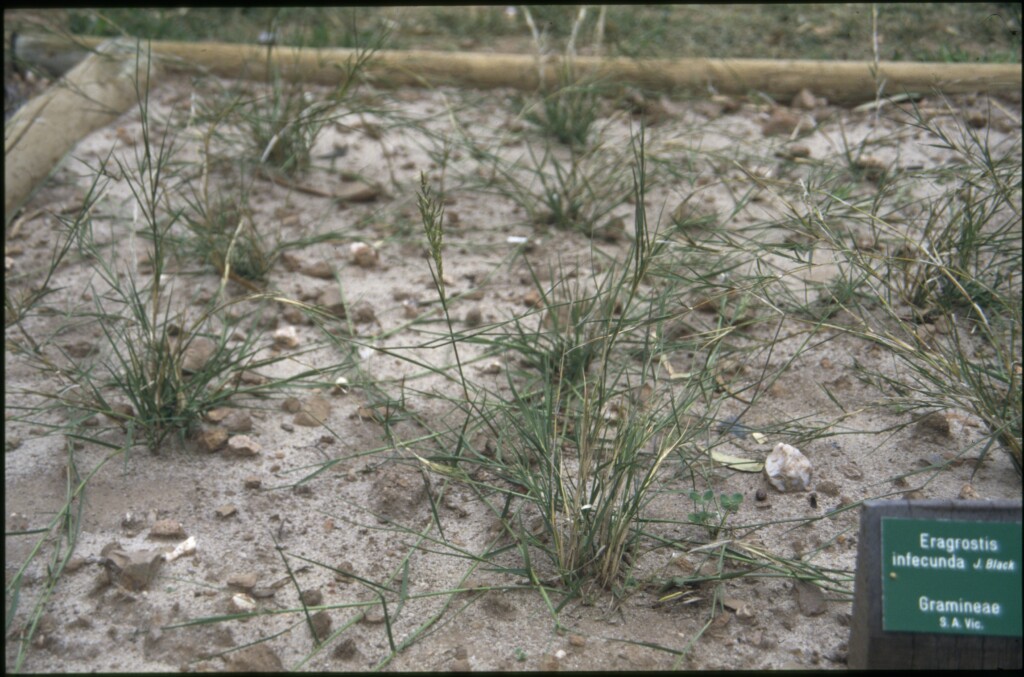Eragrostis infecunda
J.M.Black Southern Cane-grassLong rhizomatous and often stoloniferous perennial, culms wiry, to c. 3 mm diam., often knotty at base, sparsely branched, to c. 1 m high. Leaves smooth and glabrous, largely confined to culms; blade inrolled, rarely flat, to 15 cm long and 3 mm wide, often reduced in upper part of culm; sheath mostly remaining erect. Inflorescence a panicle, to 15 cm long and 8 cm wide, loosely contracted. Spikelets 5–11-flowered, 5–13 mm long and 1.5–2 mm wide, slaty green or grey, shining; glumes membranous, at least the upper with midvein apparent, acute, the lower 2–4 mm long, the upper usually longer by 1.5–2 mm; lemma 2.2–3.3 mm long, acute, the apex remaining entire until anthesis; palea equal to lemma, splitting along the midline as the grain matures; anthers 1.2–2.3 mm long. Flowers mainly Sep.–Apr.
LoM, MuM, Wim, GleP, VVP, VRiv, MSB, RobP, MuF, GipP, OtP, WaP, Gold, CVU, GGr, DunT. Also SA. Occasional on seasonally wet, heavy soils and clays of riverine floodplains and shallow lakes, etc. Formerly confused with E. australasica.
Walsh, N.G. (1994). Poaceae. In: Walsh, N.G.; Entwisle, T.J., Flora of Victoria Vol. 2, Ferns and Allied Plants, Conifers and Monocotyledons, pp. 356–627. Inkata Press, Melbourne.
 Spinning
Spinning

